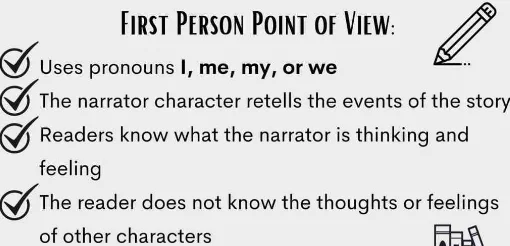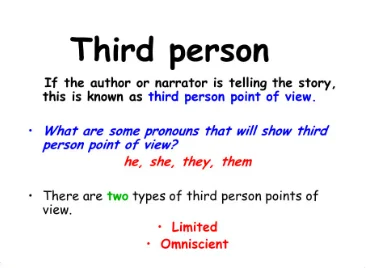Research papers are written documents that present the author’s original findings on a specific topic. They are organized in a specific way, and their primary purpose is to add new information to the field of research.
These articles are necessary for the furthering of research, the dissemination of findings, and the promotion of intellectual development among academics and researchers. We aim to discover whether you can write a research paper using first, second, or third person. Read on.
Can Research Papers Have a First Person?

Researchers may use the first person to describe their experiences, viewpoints, and interpretations when researching some subjects, such as the humanities and social sciences.
Yes, first-person references can be included in research papers; however, the degree to which they are utilized depends on the academic field and the particular style guide.
On the other hand, using the first person is often discouraged in more rigorous scientific subjects, such as the natural sciences. Authors are responsible for ensuring that their work is presented per the requirements outlined in the journal or institution in which they plan to publish their findings.
Can Research Papers Have a 2nd Person?
In most circumstances, the usage of the second person should be avoided in research publications. In academic writing, using the second-person perspective, in which the author speaks directly to the reader, is often considered less formal and less objective.
However, the usage of the second person may be acceptable in some fields of study or settings, such as in portions that are devoted to education or methodology. This is one of the possible exceptions to the rule.
However, to keep their work sounding scholarly and maintain their credibility, researchers need to be cautious and follow the criteria set by the various academic institutions or journals they publish in.
Why 1st and 2nd Person is not good for academic writing
Lack of Objectivity:First and second-person pronouns (I, we, you) can introduce subjectivity and bias into the writing. Academic writing aims to be objective, neutral, and focused on presenting evidence and logical arguments. When you avoid the first and second person, authors maintain a more impartial tone, enhancing the credibility of their research.
Less Formality: Academic writing requires a formal style to convey complex ideas effectively. The use of first and second person can make the writing sound conversational, undermining the seriousness and professionalism of the paper.
Focus on the Content: By removing the first and second person, the emphasis shifts to the research content rather than the author’s identity or the reader. This allows readers to focus on the research and its implications without being distracted by personal pronouns.
Universal Application: People from diverse backgrounds and cultures often read academic papers. Using first and second-person pronouns can be culturally specific and may translate poorly for an international audience. Using the third person ensures universality and makes the paper more accessible to a broader readership.
Why are Research papers Written in 3rd person?

- Professionalism: Writing in the third person demonstrates more professionalism and detachment from the research. It conveys that the paper is part of a collective academic discourse rather than a personal narrative.
- Formality: Academic writing, including research papers, requires a formal style to present complex ideas effectively.
- Third-person writing contributes to a more professional and serious tone, which is essential for scholarly communication.
- Universality: Third-person writing ensures the research is accessible to a broader audience, including readers from diverse cultural backgrounds.
- It avoids cultural-specific references tied to the first and second person, making the paper more inclusive and applicable across different regions and communities.
- Focus on the Content: By using the third person, the focus of the research paper remains on the subject matter and the evidence rather than on the author. This shift enables readers to concentrate on the research’s significance and its conclusions.
How to Incorporate First and Second Person in a Paper
1. Quoted text
It is possible to incorporate first- and second-person language into a research article that uses cited text by directly quoting individuals or participants in the study. For instance, citing statements from interviews or surveys in which respondents express their experiences or thoughts in the first person (using the pronoun “I”) as an example.
When writing instructional portions or trying to increase reader engagement, it might be helpful to incorporate quotes from other authors or professionals who speak to the reader in the second person and use the pronoun “you” in their addresses.
However, to keep the tone of the entire paper academic and objective, you need to ensure that most of it is written from the third-person perspective.
2. Follow Style Guidelines
When writing a research paper that uses first and second person, it is essential to adhere to the style rules supplied by the academic institution or the particular publication to which you wish to submit the work. If you do, your paper may be accepted.
Different academic disciplines and publications will approach the use of first-person and second-person pronouns differently. Your writing will be more professional and consistent if you follow these principles and use them as a reference.
Always check the style guide to see if there are any suggestions or restrictions on utilizing the first person and the second person, and make sure that you use them correctly and sparingly so that you don’t compromise the credibility of your research paper.
3. Academic Applicability

As you craft a research paper that uses the first or second person, it is important to take into consideration the academic usefulness of using these points of view.
Evaluate whether the presence of these individuals contributes to a better understanding, personal connection, or engagement with the research.
Use the first person for any personal views, explanations of methodology, or situations in which the author’s background is pertinent.
Use the second person when writing educational portions, parts encouraging interaction, or speaking directly to the reader.
Nevertheless, you should always put the paper’s objectivity first and comply with the standards of the academic area you are working in. Find a happy medium to make sure that any use of the first or second person is congruent with the scholarly tone of the paper.
4. Balance Objectivity
It is noteworthy that as you write your research paper that uses both first and second-person perspectives, it is critical to uphold a balanced level of objectivity. Excessive use of these views, while they have the potential to bring depth and engagement to the article, may also inject bias and put their credibility at risk.
To present the data and arguments objectively, you should ensure that most of the text stays in the third person. Only use the first person in suitable contexts, such as when reflecting on personal experiences or explaining how certain methods work.
Similarly, employ the second person carefully when writing instructive portions or passages to engage the reader. Examine your writing regularly to detect any possible subjectivity and revise it accordingly. Utilizing a well-rounded method helps to guarantee that the research report will keep its scholarly integrity and uphold the finest academic requirements.
